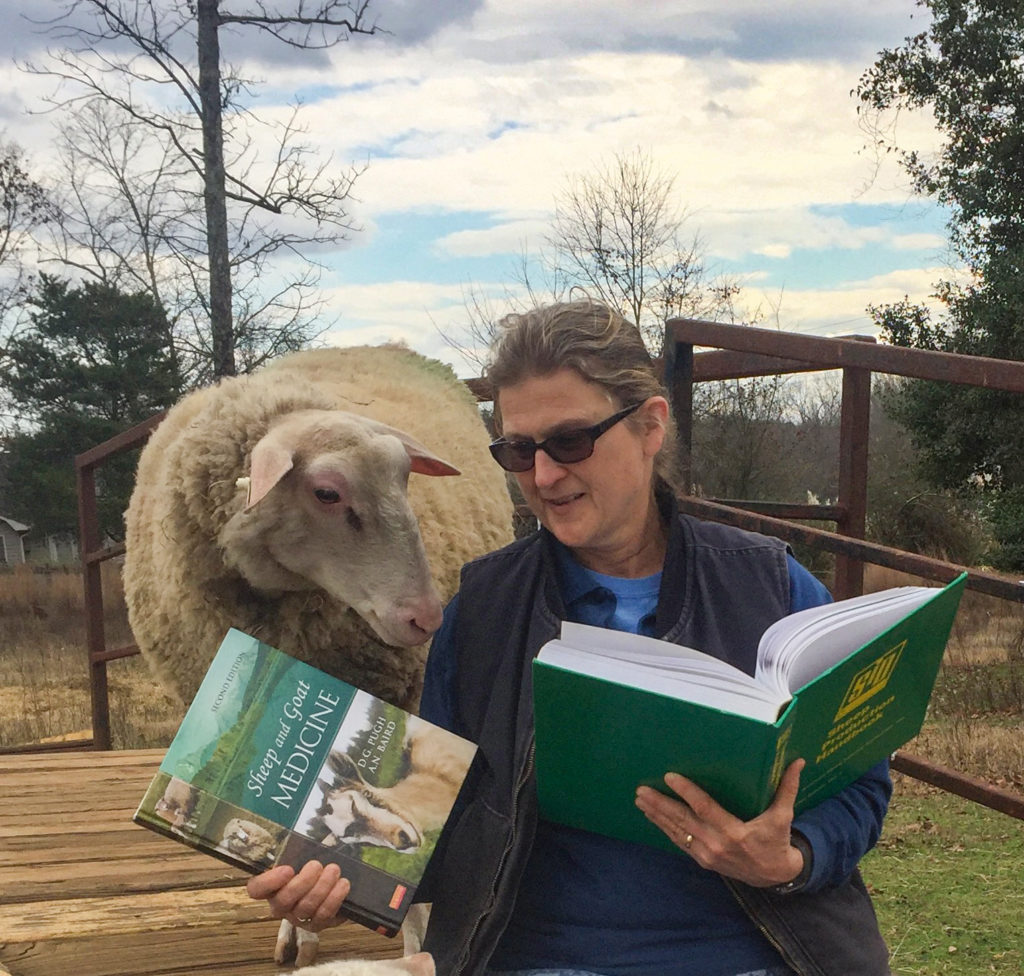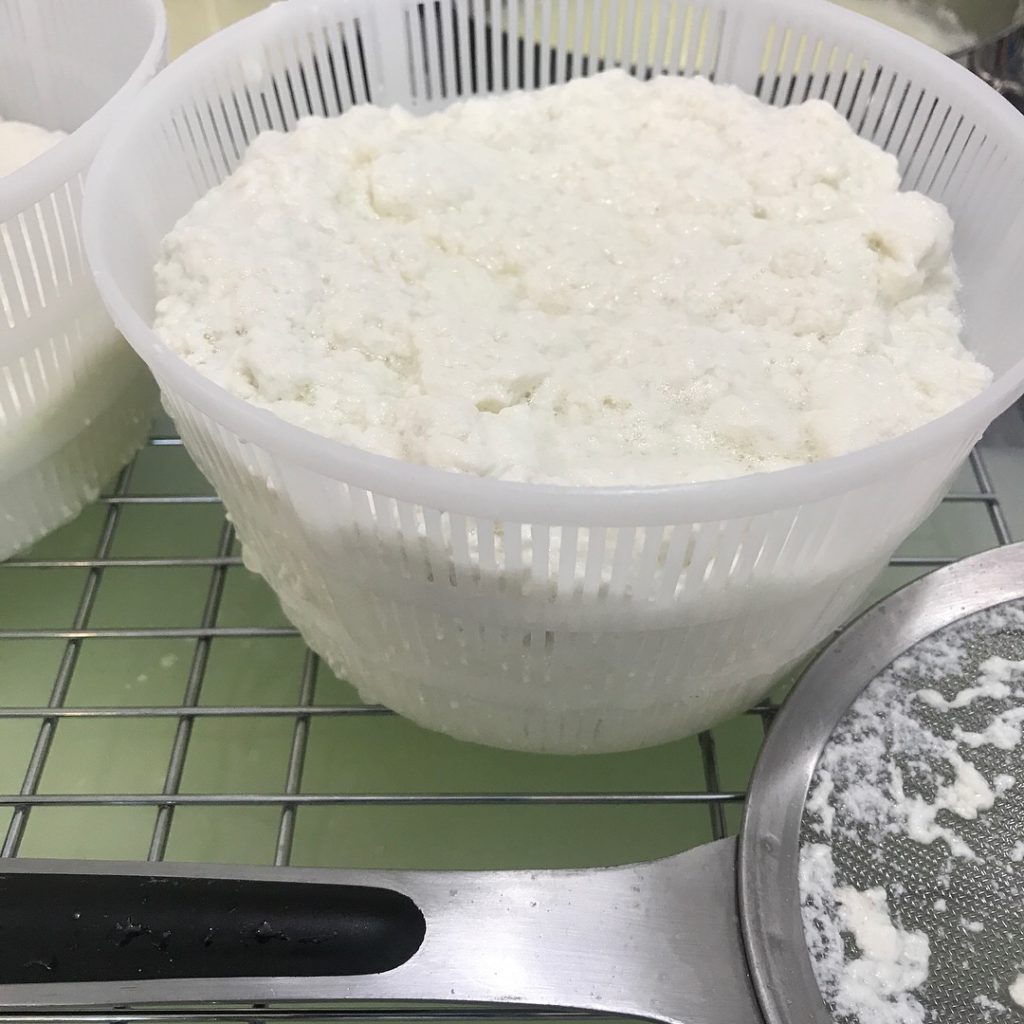What to make with sheep milk
Sheep are mostly valued for their wool and meat in the United States — but what about their milk? More and more farmers throughout the country are experimenting with what to make with sheep milk, from creamy yogurt to delicious cheese.
“Sheep milk is easy to digest, very similar to goat milk,” said Debbie Webster, U.S. representative for the Dairy Sheep Association of North America. “It has a very rich, sweet taste … It’s an awesome product.”
The short history of dairy sheep in the U.S.

While sheep have been raised for their milk for thousands of years, in the U.S., the practice is fairly new. The country’s first commercial dairy sheep farms popped up in the mid-1980s, and since then, the industry has grown to about 100 farms.
“It’s really still a growing sector,” said Mary Livingston, who owns Northland Sheep Dairy in Marathon, New York.
First permitted as a commercial dairy in 1987, Northland Sheep Dairy is a small farm that produces high-end, organic cheeses. They also create sheep milk yogurt and ice cream for personal consumption.
“You can do all the same things with sheep milk that you can do with cows milk and goat milk,” Livingston said. “But do I think sheep milk is superior? Yes, I do.”
Today, sheep dairy farms are scattered throughout the U.S., with the largest concentration in northwestern Wisconsin. Still, the industry is tiny compared to that of countries located on or near the Mediterranean, where sheep dairy farms are much more common. France alone has almost 1 million sheep in dairy production, according to “Dairy Sheep Basics for Beginners,” a resource written by David L. Thomas of the University of Wisconsin-Madison.
Over the years, certain breeds of sheep have been developed to produce greater quantities of milk. These dairy breeds are also easier to handle in a milk parlor or milk stand. They include the East Friesian of Germany, Lacaune of France, Sarda of Italy and British Milksheep of the U.K.
Due to strict animal importation regulations, it’s been a challenge to introduce these breeds to the U.S., according to Thomas. The East Friesian and their crosses are the most common breed of dairy sheep currently available in the U.S., and in many parts of the country, they can be hard to find.
What makes sheep milk different?
Sheep — even dairy breeds — provide much less milk than goats or cows. At most, a dairy sheep may produce just over 1,000 pounds of milk during 180-day lactation, while a dairy goat can produce over 3,000 pounds of milk during a 305-day lactation period, and a dairy cow can produce over five times that amount, according to a fact sheet provided by the Oklahoma Cooperative Extension Service.
However, sheep milk is notably richer in vitamins, protein and fat than goat or cow milk.
A 2006 study conducted by researchers in Spain, Denmark and Georgia found sheep milk to contain higher levels of total “solids” and major nutrients than goat and cow milk. Solids are the non-water components in milk such as proteins, lactose and minerals.
In addition, sheep milk contains significantly more butter fat and protein than both goat and cow milk. For this reason, more cheese can be made out of one gallon of sheep milk than can be made out of one gallon of goat milk or cow milk.
“It’s super gratifying as a cheesemaker to work with sheep milk,” Livingston said. “You get a high yield and a big flavor profile.”
In addition, the fat composition is different. Sheep milk has the smallest fat globule size, followed by goat milk and cow milk. And a 2011 study conducted in France found that the human digestive system more efficiently breaks down smaller milk fat globules than it does large milk fat globules, supporting the claim that sheep’s milk is easy to digest.
Popular sheep milk products

Cheese is the number one product made from sheep milk, and there’s a big market for it. Annually, the U.S. imports more than 60 million pounds of sheep milk cheese. In fact, you may have eaten sheep cheese without realizing it.
Feta, for example, is traditionally made out of sheep milk or a mixture of sheep and goat milk. This popular crumbly cheese, originally from Greece, is often sprinkled on salads and a variety of other dishes.
Roquefort, a blue cheese originating from France, is another example of a popular sheep milk cheese. As is Manchego, a semi-soft cheese originating from Spain. And Ricotta, an Italian whey cheese, is often made of sheep milk.
“We make a lot of fun, flavored soft cheeses,” said Webster, who runs Whispering Pines Farm and Dairy in South Carolina. “I make one with Brazilian chimichurri rub. I press into blocks. It’s a pretty neat cheese. You can slice it or crumble it.”
Webster also makes yogurt, Kiefer and soap out of sheep milk.
“Sheep milk soap is wonderful,” she said. “We actually save the fat when we harvest the animal and make the tallow in the soap out of that. It makes a great soap, and it doesn’t take much sheep milk to make.”
Maple Hill Farm of Ladysmith, Wisconsin, makes both sheep milk bar soaps and foaming hand soap. They also combine sheep milk with sweet almond oil, avocado oil and shea butter to make body lotion. And in 2016, they introduced sheep milk shampoo bars with two scents: rosemary mint and chamomile lemon.
Helpful tutorials for using sheep milk
Make cheese: This cheese-making video by Way Out West Blow-in blog offers clear instructions on how to make a soft cheese out of sheep milk. Starting with milk straight from the ewe, the video shows each step of the simple process.
Create your own soap: If interested in adding sheep milk to body products, here’s a great video tutorial on making milk soap published by Nature’s Garden. The video is full of commentary from the soapmaker, who reveals important details of the process. For example, she explains why it’s important to slowly add lye to the milk, not dump it in all at once.
Mix up some lotion: And here’s a tutorial on how to make sheep milk lotion by Amika Ryan, author of the blog Shepherd Like a Girl. She lists all the ingredients and materials you’ll need, as well as detailed step-by-step instructions. She even provides a link to FDA regulations that you’ll need to brush up on if you intend to sell your products.
